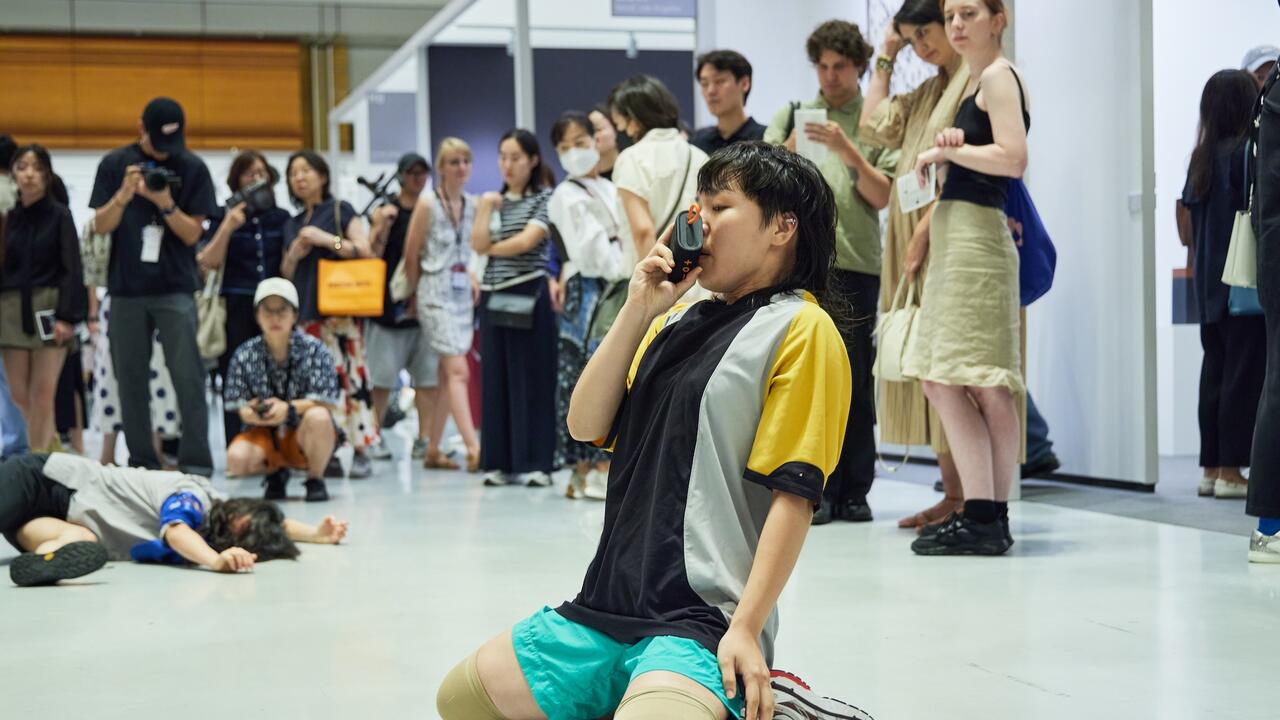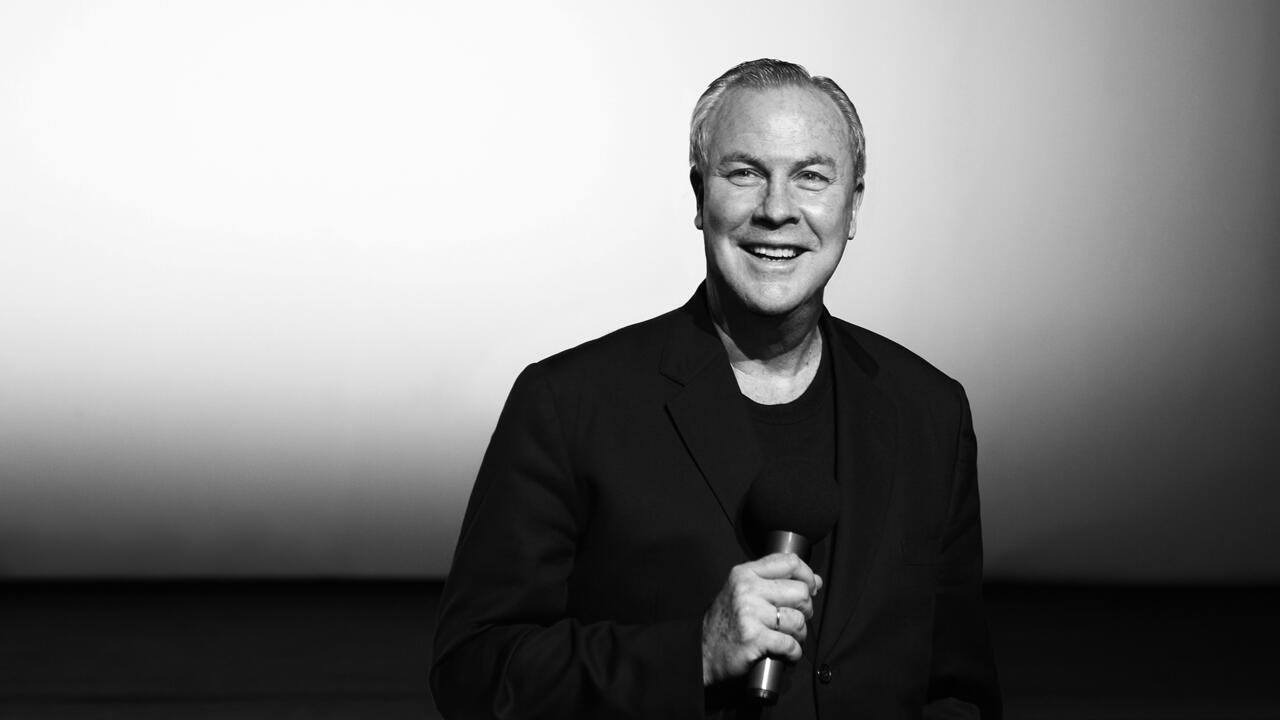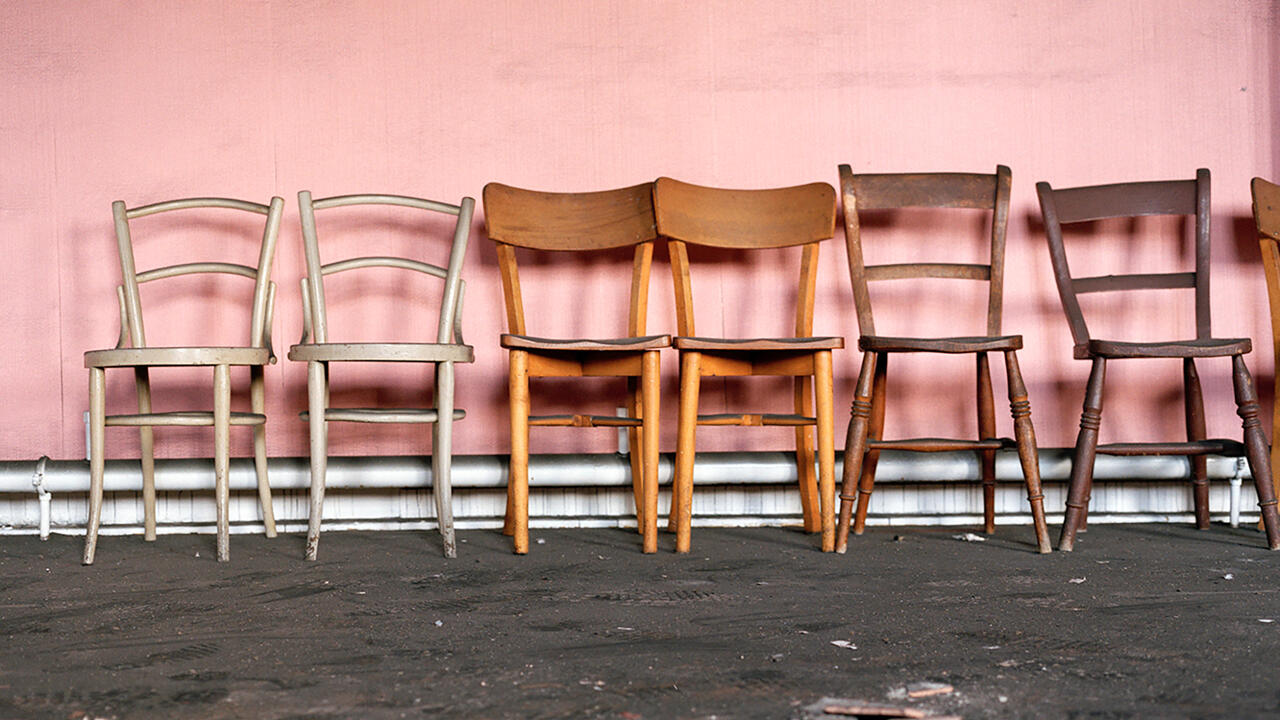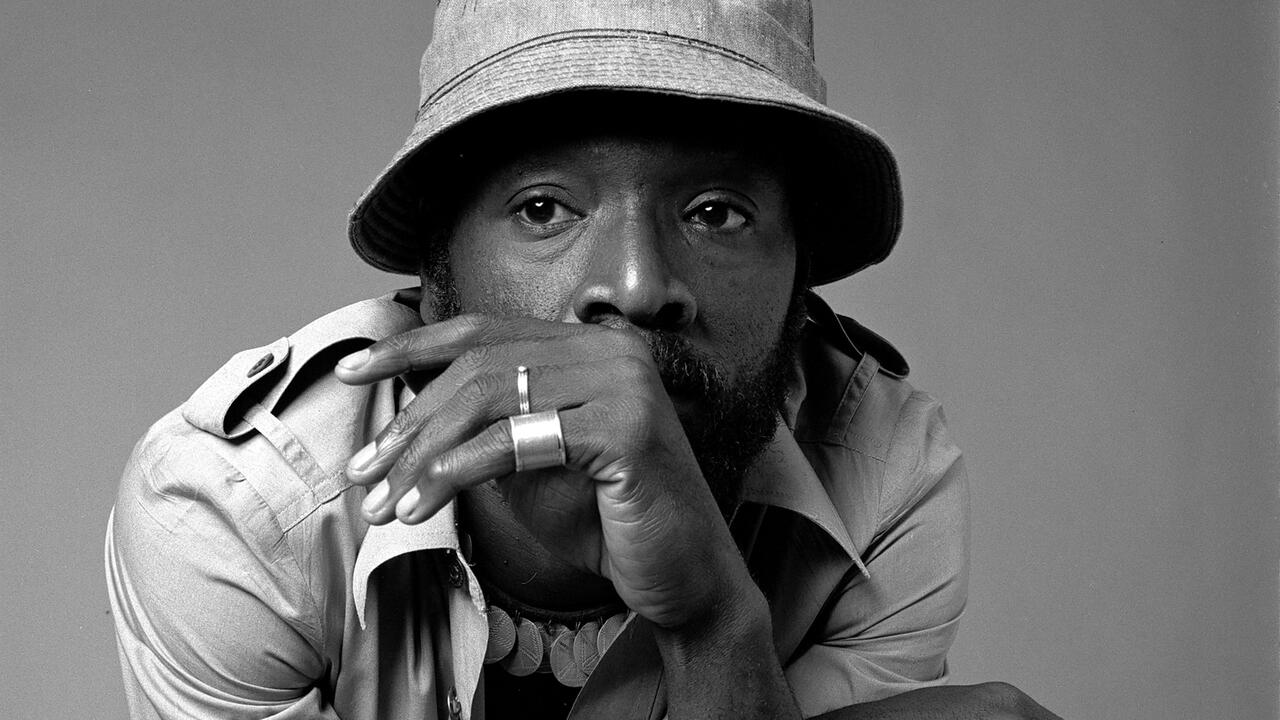The Trouble with Art Biennials Today
Is the mega-exhibition a form fundamentally unable to bear the weight of its own contradictions?
Is the mega-exhibition a form fundamentally unable to bear the weight of its own contradictions?

In 1893, the city of Chicago hosted the World’s Columbian Exposition – also known as the Chicago World’s Fair – having emerged as the preferred pick over other American cities, including New York and Washington, D.C. Intended to mark the 400th anniversary of Christopher Columbus’s ‘discovery of the New World’, it followed, and arguably perfected, the 19th-century model of the world’s fair, which was initiated in 1851 with The Great Exhibition of London.
A form of Euro-American modernism, these fairs emerged from the collision of forces and events which propelled ‘the universalistic claim of the Atlantic West’ over other peoples and lands, as historian Jürgen Osterhammel argued in his book The Transformation of the World: A Global History of the Nineteenth Century (2009). The expositions helped to synthesize nationalist ideals with imperialist ambitions and, crucially, initiated modes of observation and representation that placed the Western subject at the centre of rapidly expanding fields of knowledge about the world at large. Alongside displays of industrial, economic and scientific achievement were ethnographic showcases of so-called ‘primitive’ peoples. These representative strategies of the exposition sought to contrast a utopian vision of unrestrained advancement with a glimpse of what was purported to be humankind’s evolutionary past.

The Chicago World’s Fair was no different. As historian Robert Rydell noted in All the World’s a Fair: Visions of Empire at American International Expositions, 1876–1916 (1985), the event’s organizers believed that the fair would ‘illustrate the steps of progress of civilization and its arts in successive centuries, and in all lands up to the present time’. And so, just as fairgoers were encouraged to visit the exhibition’s main section – a collection of neoclassical structures, dubbed ‘The White City’ after the hue of the buildings’ facades, in which American technological and artistic innovations were displayed – so they were also recommended to peruse the Midway Plaisance with its living exhibits of Indigenous peoples.
Where the former presented a vision of ‘classical, hygienic harmony, and of a peaceful, humanly diverse global order’, the latter revealed that order’s true face. The African American abolitionist Frederick Douglass would speak to these deep-rooted contradictions in an 1893 pamphlet produced by Ida B. Wells, The Reason Why The Colored American Is Not in the World’s Columbian Exposition. Citing the fair’s exclusion of African Americans from meaningful participation, and its inclusion of members of a ‘Dahomey Village’ as an ethnographic attraction, Douglass wrote that it would be difficult not to conclude that even ‘with its splendid display of wealth and power, its triumphs of art and its multitudinous architectural and other attractions’, the exposition was nothing more than a ‘whited sepulchre’.

Douglass identified some of the contradictions of what scholars and curators have variously called ‘the exhibitionary complex’ or ‘the exhibitionary order’. As Timothy Mitchell writes in ‘Orientalism and the Exhibitionary Order’ (1989), the exhibitionary order is a logic of representation that reduces ‘the world to a system of objects’ and enables those objects ‘to evoke some larger meaning, such as History or Empire or Progress’, while maintaining a distance from the actual world it purports to represent.
Today, that order finds its most established and familiar form in the contemporary art biennial, of which there are now more than 200 globally – from Johannesburg to Havana and from Coventry to Valletta, which this year hosted Malta’s first-ever biennial. The confluence of market forces, the rise of cities as cultural centres and the growth of tourism as a significant economic determinant have placed enormous stress on how biennials mediate the ideas that circulate as cultural objects and the material conditions to which those ideas are supposed to relate.
One particular concern is the parasitic relationship of biennials to the cities that host them.
One particular concern is the parasitic relationship of biennials to the cities that host them and, in this regard the Venice Biennale, the oldest biennial, which launched just two years after the Chicago World’s Fair in 1895, remains a striking example. While accounting for only a small proportion of the city’s yearly throng of approximately 5 million tourists, visitor numbers to the Venice Biennale continue to rise. For the event’s 59th edition in 2022, titled ‘The Milk of Dreams’, 800,000 tickets were sold: a significant increase from the 600,000 visitors who attended the 2019 iteration, ‘May You Live in Interesting Times’.
In the words of Ralph Rugoff, who curated the 58th Venice Biennale, the exhibition featured ‘artworks that reflect upon precarious aspects of existence today’. It’s a sentiment whose cruel irony was obvious to those who witnessed the floods – the worst in more than 50 years – that raged through the city in the exhibition’s final weeks. A headline in The Art Newspaper from 2019, reassuring readers that artworks at the biennial were ‘undamaged by floods’ and that ‘most cultural institutions [would] open to the public again today’, reflected our tendency as spectators to insist on our right to keep watching.

Rugoff’s claim that his exhibition aimed to emphasize ‘a view of art’s social function as embracing both pleasure and critical thinking’ becomes a lens through which to understand how the biennial’s relationship with the world around it is premised on creating and maintaining this false binary as an aesthetic experience. Curate an exhibition that focuses too heavily on pleasure and the legitimacy of the biennial as a measure of art’s social function is put in doubt; put too much critical thinking on display and the spectacle through which these lessons are supposedly transmitted starts to falter. The city starts to look again like a place with inhabitants whose lives form the backdrop to national pavilions.
In the wake of such flooding, questions about the carbon cost of transferring artworks and people across the world have become unavoidable. There is, on the one hand, the issue of sustainability, as critic Kate Brown argued on artnet in 2019, ‘given the risks that even short-haul flights pose to the planet in general, and the fragile ecology of [Venice] in particular’. And there is also a question about how the Venice Biennale, or indeed, any biennial, can survive when the insulation that defines it is increasingly encroached upon by real-world crises, especially if a key role it now appears to serve for the city council is to manage cognitive dissonance on a collective scale.

If the world’s fairs sought to aestheticize notions of progress, today’s art biennials increasingly develop around themes that aestheticize risk and vulnerability, while seeking to appeal to a so-called general spectator. Informed, if only as pastiche, by identitarian politics forged in the various social movements of the last few decades, and the complex interplay between academia, activism and cultural production, recent biennials consolidate the shorthands – ‘agency’, ‘bodies’, ‘care’, ‘affect’ – that signal an art world prone to thematizing political subjectification without fully reckoning with its implication in the structures that create inequitable conditions.
Curatorial practices in this mode provide various advantages for the institutions and artists that depend on them. Firstly, they allow cultural objects and vague notions of social engagement to proliferate in various degrees of symbolic affinity, eliding the line which might otherwise separate what an artwork does, or attempts to do, and what it claims to be about. As a result, works which purport to take up racial, sexual and ethnic advocacies can do so merely by referencing superficial, surface-level codes associated with the relevant issues. Secondly, by appealing to, and in essence producing, a general spectator, exhibitions which aestheticize vulnerability place the viewer within a field of ‘shared concerns’.
Today’s biennials aestheticize risk and vulnerability while seeking to appeal to a so-called general spectator.
The 59th Venice Biennale gave us a standard template of these concerns in curator Cecilia Alemani’s statement: ‘the pressure of technology, the heightening of social tensions, the outbreak of the pandemic, and the looming threat of environmental disaster’. Acknowledgments of fragmentation, dislocation, fragility and ‘the acute polarities of our society’, to quote David Breslin and Adrienne Edwards, the curators of the 2022 Whitney Biennial, ‘Quiet as It’s Kept’, have become common strategies. They constitute exactly the kind of rhetorical process which, intent on expressing art’s relationship to its social world, draws attention to symptoms of structural failure rather than to the historical processes and power relations which gave rise to them. This, of course, allows arts administrators to profess a kind of institutional ‘allyship’ and to declare art venues as ‘safe spaces’ in which representations and material experiences of vulnerability find near-frictionless assimilation.

This language of fragmentation and polarity, which ostensibly marks a distance from grand narratives, also undermines, if not entirely disguises, the fundamental continuities on which the systemic production of vulnerability is based. In this year’s edition of the Whitney Biennial, ‘Even Better than the Real Thing’, curators Chrissie Iles and Meg Onli drew our attention to the ‘permeability of the relationships between mind and body, the fluidity of identity and the growing precariousness of the natural and constructed worlds around us’. The title of the 2024 Venice Biennale, ‘Foreigners Everywhere’, on the other hand, has ‘several meanings’ according to curator Adriano Pedrosa. ‘First of all, wherever you go and wherever you are, you will always encounter foreigners – they/we are everywhere. Secondly, no matter where you find yourself, you are always truly, and deep down inside, a foreigner.’ The general spectator, you/they/we, is here directly addressed. Everyone is everyone. Everywhere is everywhere. Here, it seems, the dangers endured by migrants under brutal border regimes can be abstracted into an aesthetic experience, evacuated from the structural causes – including the Italian government’s own involvement – which distribute migrant precarity unevenly.
This year’s 15th Dakar Biennale, curated by Salimata Diop, takes as its theme ‘The Wake’ – theorized by Christina Sharpe in her 2016 book In the Wake: On Blackness and Being, which explores contemporary Black life in the aftermath of trans-Atlantic slavery – and imagines the city ‘an ideal staging ground’ to address a familiar list of upheavals. Social and ecological crises, its curator believes, are paramount and augur both apocalyptic and recuperative tidings. While the organizers apprehend a ‘sense of imminence’ to the ‘ending of a world’, they also envision the possibility of ‘metamorphosis: a personal, social, ecological and economic transformation that is as inescapable as it is imperative to our collective presence in the world’. This inescapable metamorphosis, however, is premised on Africa and Africans offering ‘indigenous knowledge’ which ‘the world’ is now looking to the continent to provide. Where one world begins and another ends is not entirely clear. This vision of African internationalism, which places the continent’s artists in the role of heroic stewards – ‘sentinels of the imaginary’ who carry the world from collapse to promise – is a far cry from the pan-African ethos of the biennial’s beginnings, which emphasized, instead, political and cultural self-determination.

The relative youth of the Lagos Biennial, only in its fourth edition this year, is perhaps what saved it from similar histrionics. While its thematic focus considered the notion of ‘refuge’ as a starting point for strategies toward ‘ecological justice in this historical moment of systemic crisis’, its curators, Folakunle Oshun and Kathryn Weir, invoked no saviours, African or otherwise. Rather, it hoped to offer ‘an opportunity to reassess the promises, disappointments and ongoing ramifications of the nation-state model’. Its stated aim to move ‘the cursor away from a history of “universal” exhibitions and biennials’ and instead ‘towards experiments in non-conventional modes of exhibition-making’ was best seen in the inclusion of ‘Traces of Ecstasy’, the pavilion and exhibition project curated by KJ Abudu.
The mega-exhibition is a form fundamentally unable to bear the weight of its own contradictions.
The exhibition’s featured artists – Nolan Oswald Dennis, Evan Ifekoya, Raymond Pinto, Temitayo Shonibare and Adeju Thompson – presented works across performance, installation, video, sound, sculpture and digital art. Drawing on queer methodologies, indigenous African spiritual traditions and digital technologies, ‘Traces of Ecstasy’ invoked histories of African and African diasporic worldbuilding that emerged outside and beyond the confines of the nation-state and its temporal and socio-political enclosures. Importantly, Abudu makes critical connections between these enclosures and the ideological frames in which ‘local’ and ‘global’ or ‘Africa’ and ‘the world’ appear as intertwined – yet fundamentally distinct – historical formations. There is, instead, an emphasis on how collective identities take shape through dizzying inquiries, relationships and movements that are never fully coherent or resolved. Rather than the mere acknowledgement of flux and impermanence in the character of the diasporic, or the evaluation of such elements as bearing speculative ethical or political frameworks, the diasporic is situated in specific aspirations, against specific conditions, toward specific potentialities.

If we understand the turn to aestheticized vulnerability against the backdrop of increased institutionalization and the almost-fetishistic absorption of institutional critique, whose ultimate end is often little more than representation, the mega-exhibition or biennial today remains burdened by its history. On the one hand, many are beholden to corporate donors who might expect, for their patronage, the management of disruptive energies among cultural workers and the pacification of difference; on the other, it is obliged to meet more ambiguous assumptions that artworks and art institutions reflect the times. To critically engage with the social and political life in which it partakes, curatorial practice must examine its implication in an exhibitionary complex for which the representation of catastrophe is itself the goal, rather than a means to struggle against it.
Inevitably, the only perceivable horizon is culture as commodity spectacle and as the ground for narrow bromides on present and future uncertainty. An obvious conclusion here might be that the mega-exhibition is a form fundamentally unable to bear the weight of its own contradictions. If so, it is the perfect axiom for our age, however late we are in capital’s modernity. Walter Benjamin’s well-known quote from ‘The Work of Art in the Age of Mechanical Reproduction’ (1935), that ‘humanity’s self-alienation has reached such a degree that it can experience its own destruction as an aesthetic pleasure of the first order’ has never been more apparent and, unless a drastic disruption were to take place, art’s dominant social role might be to keep us hooked until there is no one left.
This article first appeared in frieze issue 248 with the headline ‘Spectator Generator’
Main image: Bird's eye view of the World's Columbian Exposition (detail), Chicago, 1893. Courtesy: Wikimedia Commons / Library of Congress
























